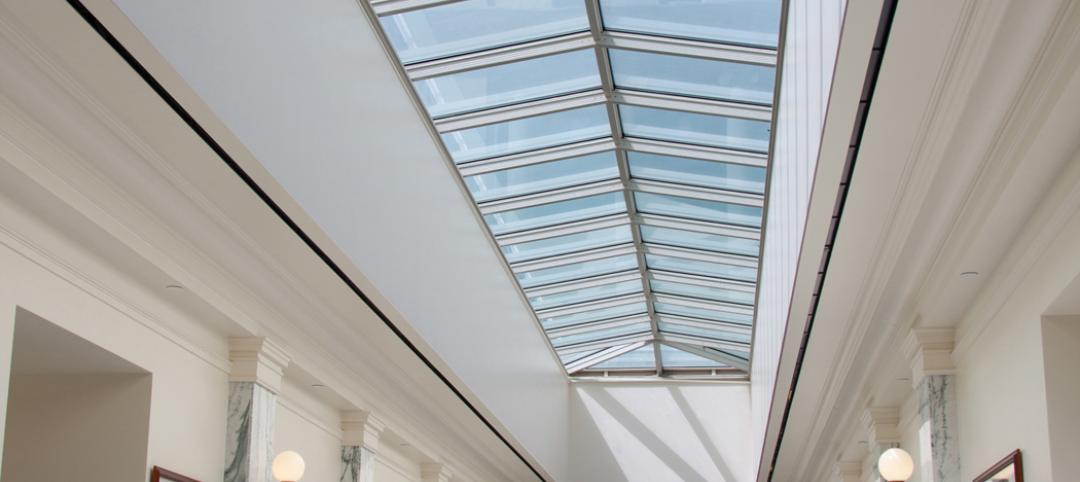Any way you look at it, the data center market remains one of the healthiest sectors of the nonresidential construction industry. As the growth of cloud computing and mobile technology continues, the need for storage and computing power will expand exponentially.
Cisco predicts global data center traffic to grow threefold and reach a total of 7.7 zettabytes in annual traffic by 2017 (a zettabyte is one billion terabytes, in case you were wondering). The fastest-growing component is cloud traffic, which is expected to expand 4.5-fold from 1.2 zettabytes in 2012 to 5.3 zettabytes by 2017. In fact, by the end of 2014, cloud-based data centers will, for the first time, surpass traditional data centers in terms of total workload, says Cisco.
In its most recent forecast report (http://tinyurl.com/datacenterforecast), technology research firm TechNavio called for the global market for data center construction to register an annual compound growth rate of 21% through 2018. Much of that growth is expected to occur in the colocation facilities segment, as corporations and other data enterprises look to outsource their increasingly complex and costly—and often outdated—data center operations.
The maturation of the modular and containerized data center sector may eventually hinder the growth of traditional data center construction services, according to TechNavio analysts. As data center owners look to expand quickly and get online faster, a growing number are turning to “plug and play” and “data center in a box” solutions in lieu of site-built systems and facilities.
The technology enables faster scaling and installation, and often comes equipped with the required power and cooling solutions, as well as built-in control, monitoring, and management functions to maximize performance.
TOP DATA CENTER SECTOR ARCHITECTURE FIRMS
2013 Data Center Revenue ($)
1 Gensler $25,839,736
2 Corgan 23,560,060
3 HDR 15,150,000
4 Page 13,950,000
5 Sheehan Partners 5,666,072
6 Little 5,450,648
7 RS&H 4,900,000
8 Callison 3,940,188
9 Clark Nexsen 3,186,054
10 Environetics 2,947,119
SEE FULL LIST
TOP DATA CENTER SECTOR ENGINEERING FIRMS
2013 Data Center Revenue ($)
1 Fluor Corporation $243,370,000
2 Jacobs 47,490,000
3 Syska Hennessy Group 41,934,230
4 URS Corp. 25,100,000
5 Vanderweil Engineers 21,588,000
6 Integrated Design Group 13,574,682
7 Parsons Brinckerhoff 12,185,435
8 Environmental Systems Design 10,063,915
9 Arup 9,997,297
10 Highland Associates 8,400,000
SEE FULL LIST
TOP DATA CENTER SECTOR CONSTRUCTION FIRMS
2013 Data Center Revenue ($)
1 Holder Construction $1,124,000,000
2 Turner Construction 512,000,000
3 DPR Construction 506,001,637
4 Structure Tone 400,450,000
5 Mortenson Construction 298,590,000
6 Gilbane 241,967,522
7 Balfour Beatty US 202,427,241
8 Hensel Phelps 177,120,000
9 Hoffman Construction 168,000,000
10 HITT Contracting 136,900,000
SEE FULL LIST
Cisco, Dell, and Huawei are among the hardware manufacturers offering modular and containerized solutions, and are no doubt taking market share from AEC firms, including many of the Giants 300 firms.
Giants 300 coverage of Data Centers is brought to you by Siemens http://w3.usa.siemens.com
Of the 364 AEC firms that completed the BD+C Giants 300 survey, more than a third (36%) reported at least some revenue from data center work in 2013. Thirty-four firms said that at least 10% of their total revenue in 2013 was derived from the data center construction market, and 11 firms relied on the sector for more than a quarter of their business.
Growth of Green
Stricter energy regulations and the rising cost of operating data facilities continue to drive demand for highly energy-efficient spaces. TechNavio expects the construction market for green data centers to grow at an annual rate of 31% between 2013 and 2018.
“The growing concern over reducing the computing costs for companies and data center facilities leads to the adoption of solutions such as natural air cooling and precision data center cooling,” said Faisal Ghaus, Vice President of TechNavio.
Facebook’s prefab concept aims to slash construction time in half
Less than a year after opening its ultra-green, hydropowered data center facility in Luleå, Sweden, Facebook is back at it in Mother Svea with yet another novel approach to data center design. In May, the tech giant broke ground on an expansion to its Luleå facility, which is rated as one of the most energy-efficient data centers in the world, with an average power usage effectiveness (PUE) of 1.05.
With Luleå 2, the company expects to achieve the same energy performance, but with a construction and deployment schedule that is roughly half its typical data center project. To do so, the Building Team is implementing Facebook’s newly developed Rapid Deployment Data Center (RDDC) concept, which utilizes modular and Lean design principles to streamline planning and construction, reduce the amount of materials, and create facilities that are more site-agnostic, according to Marco Magarelli, AIA, Architect, Datacenter R&D with Facebook.
“By deploying pre-manufactured assemblies, a majority of the components can be used interchangeably,” wrote Magarelli in a recent blog post on the RDDC concept. “It’s our hope that by standardizing the designs of our component assemblies, much like we do with OCP servers, we can deploy a unitized data center into almost any region in the world faster, leaner, and more cost effectively.”
Developed through the Facebook-initiated Open Compute Project, which aims to crowdsource data center design, the RDDC approach relies on two core prefab concepts:
Chassis assembly method. Pre-assembled steel frames 12 feet wide and 40 feet long serve as the “chassis,” on which the vital data center components—cable trays, power busways, containment panels, lighting, etc.—are bolted in a factory, much like an auto assembly line.

In May, Facebook broke ground on an expansion to its data center campus in Luleå, Sweden. Using a new prefab construction process, the tech giant expects to build the new data center twice as fast as the first facility. PHOTO: FACEBOOK
The chassis are shipped to the site and mounted atop steel columns. The chassis are attached end to end to create the typical 60-foot-long cold aisle, with 10 feet of aisle space at each end. This series of connected chassis forms a “canopy,” under which the server racks reside.
“Unlike containerized solutions, which are a full volumetric approach that includes a floor, this idea focuses solely on the framework that exists above the racks, to avoid shipping the empty space that will eventually be occupied by the racks,” said Magarelli.
Flat-pack assemblies. This Ikea-like approach neatly packs the walls and ceiling panels into standard, 8-foot modules that are easily transportable to a site on a flatbed trailer without requiring special permits for wide loads. Standard building products like metal studs and preassembled, unitized containment panels are then erected on the site and are fully self-supporting.
The ceiling panels use Epicore metal deck product, which spans the 12-foot width of the cold aisle and racks. This serves the additional duty of carrying the loads of the trays, power bus, and light fixtures below it using a proprietary hanger clip for the threaded rods, according to Magarelli.
“Careful attention was paid to minimizing the number of unique components,” he wrote. “For example, 364 identical wall panels are used in each data hall.”
For more on Facebook’s Rapid Deployment Data Center method, visit: www.opencompute.org/blog/faster-leaner-smarter-better-data-centers.
Read BD+C's full 2014 Giants 300 Report
Related Stories
| Jan 16, 2012
Suffolk completes construction on progressive operating suite
5,700 square-foot operating suite to be test bed for next generation of imaged-guided operating techniques.
| Jan 15, 2012
Hollister Construction Services oversees interior office fit-out for Harding Loevner
The work includes constructing open space areas, new conference, trading and training rooms, along with multiple kitchenettes.
| Jan 15, 2012
Smith Consulting Architects designs Flower Hill Promenade expansion in Del Mar, Calif.
The $22 million expansion includes a 75,000-square-foot, two-story retail/office building and a 397-car parking structure, along with parking and circulation improvements and new landscaping throughout.
| Jan 15, 2012
535 Madison Avenue achieves LEED Gold certification
Class-A commercial building meets sustainability requirements of LEED Program.
| Jan 12, 2012
CSHQA receives AIA Northwest & Pacific Region Merit Award for Idaho State Capitol restoration
After a century of service, use, and countless modifications which eroded the historical character of the building and grounds, the restoration brought the 200,000-sf building back to its former grandeur by restoring historical elements, preserving existing materials, and rehabilitating spaces for contemporary uses.
| Jan 12, 2012
Stellar earns construction industry's most prestigious safety award
Now widely accepted as the construction industry's standard measure of safety performance, the STEP awards were established in 1989 to evaluate and improve safety practices and recognize outstanding safety efforts.
| Jan 12, 2012
Building independence: New take on female power
Memoir explores historic engineering project, women's empowerment era.
| Jan 12, 2012
3M takes part in Better Buildings Challenge
As a partner in the challenge, 3M has committed to reduce energy use by 25% in 78 of its plants, encompassing nearly 38 million-sf of building space.
| Jan 11, 2012
DOE announces guide for 50% more energy efficient retail buildings
The 50% AEDG series provides a practical approach for designers and builders of retail stores, and other major commercial building types, to achieve 50% energy savings compared to the building energy code used in many parts of the nation.
| Jan 11, 2012
Mortenson starts construction of Rim Rock Wind Project
Renewable energy contractor to build 189-megawatt wind project in Sunburst, Mont.


















